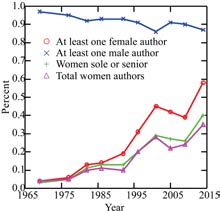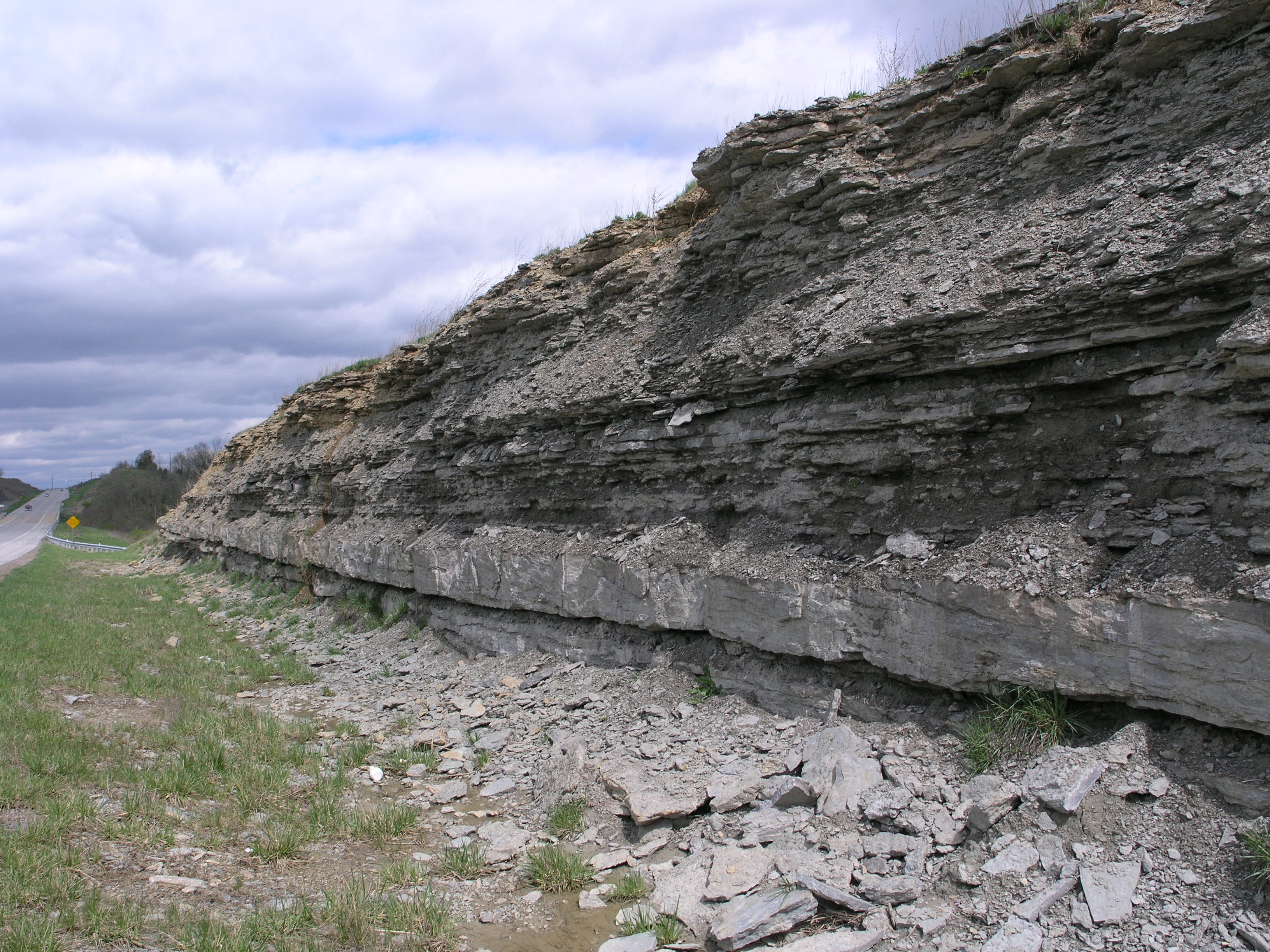Our society is diverse, and our shared diversity is increasingly valued and celebrated in the 21st century. The diversity of scientists, however, is much more limited. The geological sciences are recognized as some of the least ethnically diverse sciences and women are strongly outnumbered by their male counterparts. 2013 analysis of membership within the Paleontological Society (see Priscum articles below) demonstrated that only 12% of members identified as non-Caucasian and only 25% of members were women. Among students, the gender disparity is less, but glass ceilings still persist at the transition from student to professional and at various points within a career, such promotion points. Women and minorities also receive professional recognition at a much lower frequency.

Proportion of women authors at NAPC meetings from 1967 to 2014. From Plotnick et al. 2014.
Women are increasingly participating in scientific meetings, as shown in this graph. But they tend to do so as part of collaborative teams, typically involving male colleagues (as noted by the 85% of abstracts with a male author at the 2014 NAPC meeting shown to the right).
Clearly additional work is needed to develop a scientific community that all members of our diverse society can participate fully within. Science is strongest when all of the best and brightest are engaged. Both structural changes within science and academia and mentoring opportunities will be required to achieve social equity in science.
Members of the Stigall Lab engage in a variety of outreach events through schools, Ohio University, and the public to interact with young women and low income youth to help foster an interest in science. We further promote broad participation in science to public and academic groups of all ages and compositions. Dr. Stigall is an active member of the Paleontological Society Diversity and Inclusion Committee and promotes inclusive and anti-racist policy development at Ohio University.
Related publications:
Paleontological Society Diversity & Inclusion Committee. 2021. Diversity, equity, and inclusion matter in paleontology. Priscum, 26 (1): 1-4. (coordinating author role). PDF https://www.paleosoc.org/assets/docs/Priscum_May2021.pdf
Cohen, P.A., Stigall, A.L., & Topaz, C. 2019. A gender analysis of the Paleontological Society: Trends, gaps, and a way forward. Geological Society of America, Abstracts with Programs, 51 (5): 228938. doi: 10.1130/abs/2019AM-338938.
Plotnick, R., Stigall, A.L. & Stefanescu, I. 2014. Evolution of Paleontology: Long-term gender trends in an Earth Science discipline. GSA Today, 24(11): 44-45. Open Access
Stigall, A.L. 2013. The Paleontological Society 2013; A snapshot in time. Priscum, 20(2), 1-4. PDF
Stigall, A.L. 2013. Where are the women in Paleontology? Priscum, 20(1), 1-3. PDF

